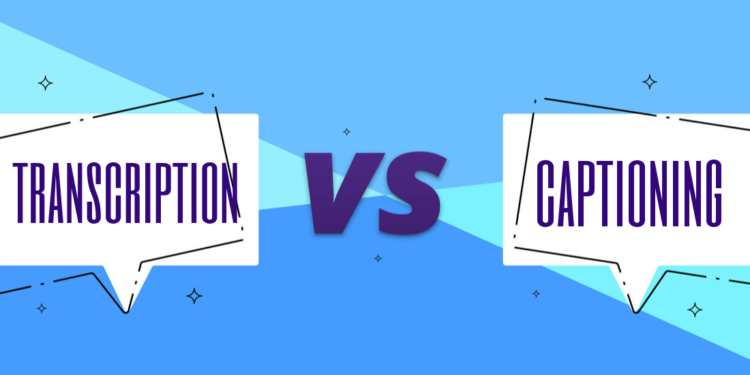If you are someone who spends a lot of time watching videos on social media channels, you will have probably come across captioning. Captions are used to make videos more accessible and are becoming increasingly common when videos are posted online. While you might think that this is the same as transcription, this is not the case at all.
Below, we are going to look at the difference between captioning and transcription and some of the benefits of each. Read on to find out more about this.
What is Captioning?
If you are unfamiliar with what captioning involves then you know that this is the process of dividing the transcripted text into chunks. These chunks are commonly known as ‘caption frames’ and they will usually be placed alongside a video that aligns with the text. For example, captions would detail what a person in a video is saying, as they are saying it. Captions will not only indicate when someone is speaking but they will also let the user know if there is any additional sound such as music or a car speeding past. Captions can be created manually or using AI in 2020.
What is Transcription?
Transcription is very different to captioning and is often used in different applications. Transcription involves converting speech or any audio into a text document. In a transcription, there isn’t usually any time information attached as it serves a different purpose. Interestingly, there can be two types of transcription services that you can choose from and what you choose can depend on what it is being used for. The types are clean read transcription and verbatim transcription. Companies like Verbit can offer services that make automatic transcription much easier and efficient.
Insert Image: https://pixabay.com/photos/office-startup-business-home-office-594132/ Image Source: Pixabay
What Makes Them Different?
The main difference between transcription and captioning is that they are often used for different things. While you could suggest that a transcription could contribute to captions, there are some big differences between the two.
Transcriptions don’t need to include outside noise, time stamps or any additional information. They are commonly used in medical and legal applications. Transcription can often be seen as a much more accurate tool but this is not always the case. Captioning is used to make video content more accessible and so is used by a larger group of people.
Which Is Better?
It can be hard to decide which is better between captioning and transcription as, ultimately, it is down to what they are being used for. According to recent reports however, captions increase video time by 12%. This is usually due to the fact that even those who are capable of listening to the audio in a video don’t always want to. For example, if they were in a public place and didn’t have any headphones.
Transcriptions are often the much better choice for those who need accurate information without any distractions. For example, a doctor wouldn’t need information about music playing in the surgery when compiling patient notes. So, in this case, transcription services would be the best option.
Final Verdict
As you can see, there are some strong differences between transcription and captioning. Both have their benefits and their practical uses. For those who want to make use of these, there are plenty of AI-powered options that can make it much easier and cost-effective. These tools are extremely useful and are becoming more common. Now that you know a bit more about this, you’ll surely pay more attention to how captions on videos are generated.


